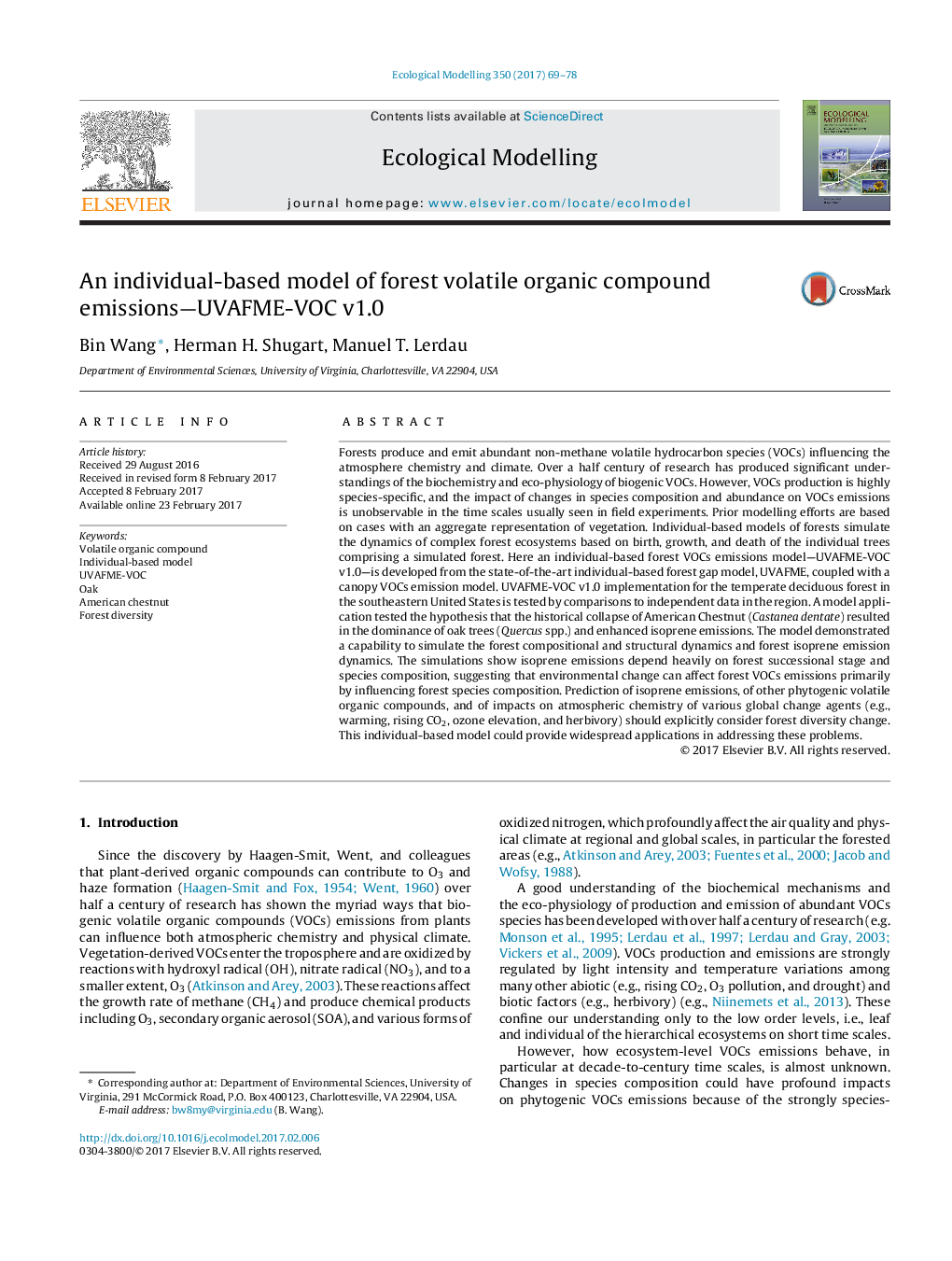| کد مقاله | کد نشریه | سال انتشار | مقاله انگلیسی | نسخه تمام متن |
|---|---|---|---|---|
| 5742235 | 1617397 | 2017 | 10 صفحه PDF | دانلود رایگان |

- The first individual-based forest VOC emissions model (UVAFME-VOC) is developed.
- One of the great advantages is explicitly representing species diversity dynamically.
- Enhanced isoprene emissions from wiped-out American Chestnut in the eastern US is first proved by this model.
- It is a powerful tool in studying roles of forest diversity in global change-atmospheric chemistry feedbacks.
Forests produce and emit abundant non-methane volatile hydrocarbon species (VOCs) influencing the atmosphere chemistry and climate. Over a half century of research has produced significant understandings of the biochemistry and eco-physiology of biogenic VOCs. However, VOCs production is highly species-specific, and the impact of changes in species composition and abundance on VOCs emissions is unobservable in the time scales usually seen in field experiments. Prior modelling efforts are based on cases with an aggregate representation of vegetation. Individual-based models of forests simulate the dynamics of complex forest ecosystems based on birth, growth, and death of the individual trees comprising a simulated forest. Here an individual-based forest VOCs emissions model-UVAFME-VOC v1.0-is developed from the state-of-the-art individual-based forest gap model, UVAFME, coupled with a canopy VOCs emission model. UVAFME-VOC v1.0 implementation for the temperate deciduous forest in the southeastern United States is tested by comparisons to independent data in the region. A model application tested the hypothesis that the historical collapse of American Chestnut (Castanea dentate) resulted in the dominance of oak trees (Quercus spp.) and enhanced isoprene emissions. The model demonstrated a capability to simulate the forest compositional and structural dynamics and forest isoprene emission dynamics. The simulations show isoprene emissions depend heavily on forest successional stage and species composition, suggesting that environmental change can affect forest VOCs emissions primarily by influencing forest species composition. Prediction of isoprene emissions, of other phytogenic volatile organic compounds, and of impacts on atmospheric chemistry of various global change agents (e.g., warming, rising CO2, ozone elevation, and herbivory) should explicitly consider forest diversity change. This individual-based model could provide widespread applications in addressing these problems.
Journal: Ecological Modelling - Volume 350, 24 April 2017, Pages 69-78